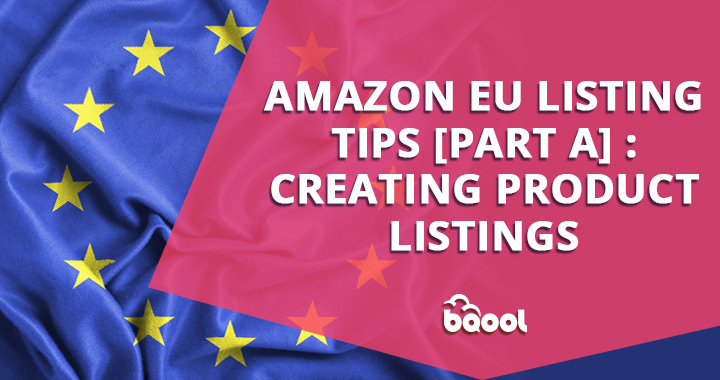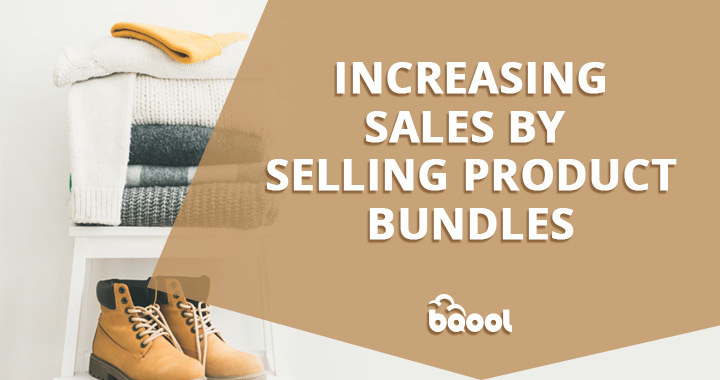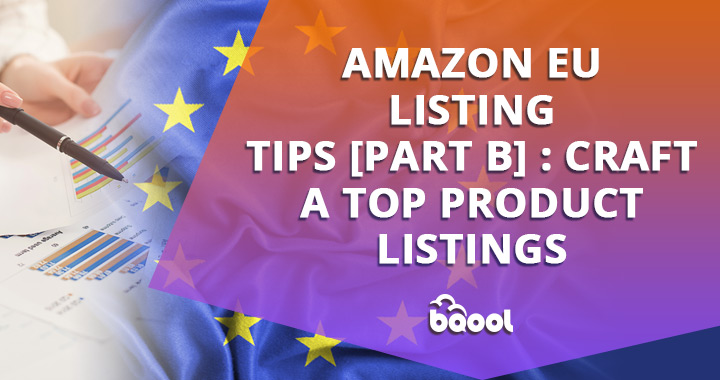Amazon EU Listing Tips [Part A]: Creating Product Listings

On Amazon, content is key. As a seller, your listings are pretty much the only thing you can control on Amazon –so you’d better nail them. This is how you can make a top product listing on Amazon EU and get your products rank higher.
On Amazon more than anywhere else on the web, content is key. As a seller, the content you create on Amazon is pretty much the only way you’ve got to improve your rankings and visibility on the marketplace. And without visibility, it doesn’t matter how good your product is: buyers simply won’t notice you.
So you’d better nail the content you set up on Amazon –that is, your listings.
In case you don’t know, an Amazon listing is the equivalent of a product page on any other online shop. It’s where all your product-related content is published in order to talk Amazon’s users into buying it. So you have to take extra care of anything that appears on it.
Because your listings do not only include your product description. They also include your customers’ reviews, your visitors’ questions, information about your product’s availability and pricing… that is, everything related to the service you provide.
So your Amazon listings should be the perfect mix of killer content and top service. But how can you achieve that? What should you be taking into account? How can you make top product listings on Amazon EU?
Well, this is how.
Amazon listings’ general tips
Before writing any listing, there is some general stuff you should be aware of. Because if you come from the US and this is the first time you’re selling on Amazon EU, there might be a few things you don’t know about.
See, in the US and, more generally, in any English speaking country, everyone is expected to speak and understand English. But in Europe, there’s a whole lot of cultural diversity and not everyone understands your mother tongue.
True: English is one of Europe’s “official languages” –but also French is, and not everyone speaks French. In Europe, every country has its own official language, sometimes more than one, which is almost never English –except for the UK.
And whereas it is true that the majority of European people might understand some English at a basic-medium level, that doesn’t imply that they’re able or willing to buy stuff on Amazon whose product description they do not fully, 100% understand.
So that’s one thing to be aware of: your listings will have to be adapted to every country you want to sell in. You should always list your products on your target market’s native language, not yours.
Let’s see what else you should take into account before starting on Amazon EU and what I recommend you doing.
1. Write your listings down, then translate them
So English is the language you own, right? Then work on your listings in English first. This way you’ll be able to put together a very complete listing without missing any points.
Once this is done, hire a professional copywriter & copy translator to complete the job –better if they are native.
There is nothing more unreliable than a copy with grammar/orthography errors, wrong phrases or sentences that do not make sense. This makes you look bad as a vendor and makes your product untrustworthy.
2. Fully localize
You need to translate your listings, yes; but you need to do that from a commercial perspective. Translating your copy is not enough: you need to adapt your whole commercial intent and content to any given country you want to operate in.
So before translating, do comprehensive keyword research on every country and language you want to work with. This way, your translator will get a sense of which words/topics need to be prioritized when translating. It will also give them an idea of which benefits are most valued in every country.
EXAMPLE: the same product might be considered in a slightly different way depending on the country. Imagine some snow gear, for example. A product might be a day-to-day item in colder areas of Europe or an occasional leisure item in warmer ones. So in both cases, the copy should be focusing on slightly different USPs or benefits.
Also, you need to take into account that different cultures mean different national personality traits: people in Germany and people in Spain have very different approaches when making a purchase. Remember that your copy should be fully localized so that your product looks appealing to all countries.
EXAMPLE: German customers tend to prioritize product quality, performance, and details, and buy into the logic-oriented copy, with rational benefits. Spanish customers are more likely to buy products with good social acceptance –so reviews are key– and a good value for money –so pricing is also key–. Italian & French users focus their trust on the brand and are particularly sensitive to well-written product descriptions and well-detailed product images, that is, they value presentation a lot.
Up Next
Amazon EU Listing Tips [Part B]: Craft Top Product Listings
Author Bio:
Jordi Ordóñez is an ecommerce and Amazon consultant located in Barcelona. He has been working on online projects since 2000 for clients like Intersport, Audi, Volkswagen, and Nike. He is also a lecturer and collaborator at eShow, Shopify, SEMRush, Prestashop, Kschool, The Valley and Foxize.








